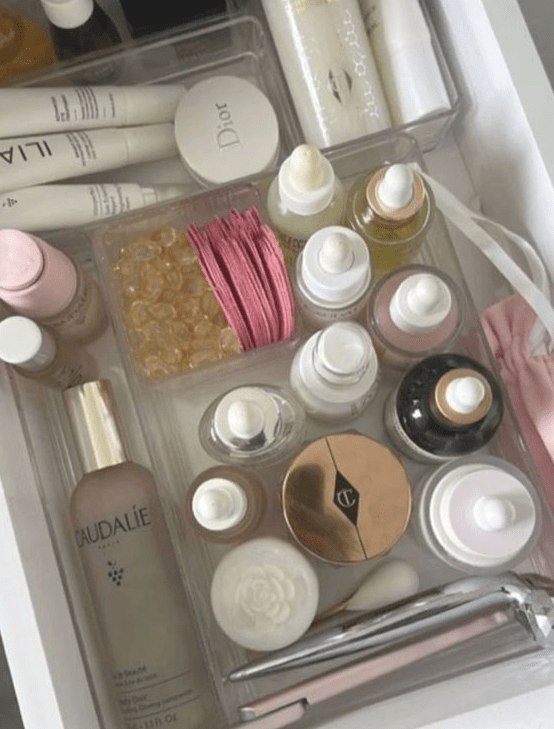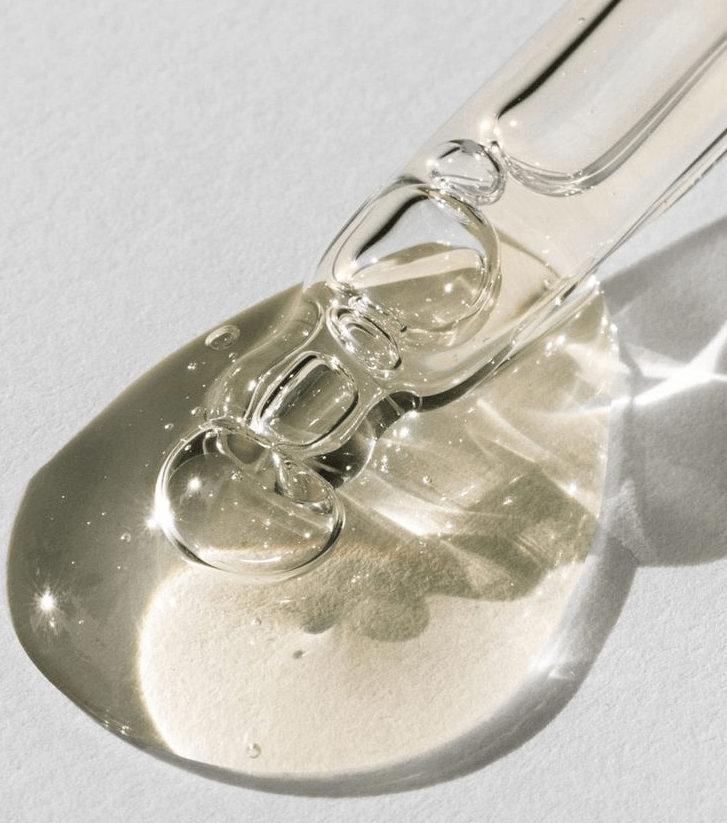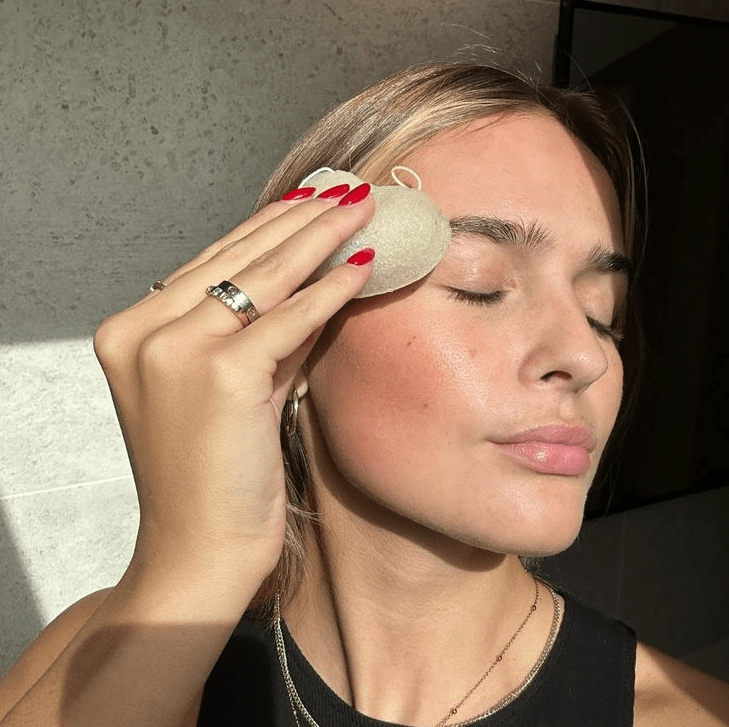This site contains affiliate links. I may earn a small commission, at no extra cost to you.
In this post I’ll answer a question I get asked all the time – can I use retinol after salicylic acid cleanser? Since retinol and salicylic acid together are very popular skin care actives, it’s easy to wonder if and how you can safely combine them. Hopefully I explain everything clearly for you in this post so you can get the best results.
Can I use retinol after salicylic acid cleanser?

Retinol products are becoming super popular for treating both acne and anti aging skin concerns because retinol works so well, whilst using a salicylic acid face wash in your skincare regimen is already very popular. Incorporating a salicylic acid product can be game changing for acne-prone skin, if you do it carefully. For this reason, lots of people want to combine them.
The problem is that, with skincare products and active ingredients, less is usually more. The general advice is that, although these are both powerhouse ingredients, it is best not to use them in the same morning or evening routine.
Even if you don’t have sensitive skin, using a retinol treatment and salicylic acid together has a high risk of skin irritation. You can, however, use both potent ingredients in your skincare routine, just in a different way.
How to use salicylic acid and retinol together
There are a few ways you can incorporate retinol and a beta-hydroxy acid (salicylic acid) together:
Use your salicylic acid cleanser in your morning routine only

When anyone starts using retinol, I always recommend they temporarily quit their other actives, including salicylic acid! But I know that, sometimes when a product has given you great results, you can be reluctant to not use it all time.
You might worry that not using it every single morning and night will cause future breakouts and harm your visible results. However, I can assure that I’ve been there and, for lots of people, you can still maintain great skin by lowering the frequency a little.
You can try swapping your salicylic acid cleanser to be used only in the mornings, for example.
This means that you can apply retinol serum at night – check out my guide on the best retinoids for clog prone skin if you’re not sure which product to pick.
If you’re going to try this method, you’ll need a new water based cleanser without actives to replace your salicylic acid cleanser at night. This minimises the risk of redness, dryness and damage to your skin barrier.
Use your retinoid on alternate days to reduce potential side effects

If you prefer to use your salicylic acid cleanser almost daily, another good option is to use your retinol on alternate nights. It’s important to use it at night vs in the day because some retinol products degrade in sunlight or artificial light.
This can render them ineffective or less effective if worn throughout the day. However, adapalene (Differin) is stable to be worn in the daytime if you really would like to use it in the morning.
Personally, I still recommend Differin to be used at night so it’s worn without makeup or SPF interfering.
On the nights you want to use retinol, you can use a water based cleanser without actives instead of your salicylic acid cleanser.
It is a myth that you have to use retinol daily for it to be effective – you can still get great results by using it 3+ times a week.
Salicylic acid cleanser vs serum

The third option is to consider swapping a salicylic acid cleanser for a serum or toner. This way, you don’t have to worry about having two different kinds of cleansers.
You might even find them more effective, because the skincare ingredients are left on the skin vs having a short contact time and getting washed off.
However, you still don’t want to use the serum and retinol in the same routine. You could use the salicylic acid serum in the morning and retinol serum at night, however I don’t think this is the best option.
Whilst this is technically ‘allowed’, it may still cause dry skin and irritation. Yes it can work well on oil and dead skin, especially for oily skin types, but oily skin can still be sensitive and irritated!
I’d recommend keeping both active ingredients to different days completely. So for example, you might use salicylic acid on Monday, Wednesday and Friday, using retinol on the other days.
Just because you can, doesn’t mean you should

A skincare rule I learned early on was that just because you can combine things, doesn’t mean you should do it.
For example, you technically can layer azelaic acid on top of retinol, but I still don’t do it even though I use both actives in a given week. I think people often take these rules as a free pass to combine anything that’s technically ‘allowed’, and then wonder why their skin is irritated.
They think it won’t cause irritation, but it likely still can. This is because everyone’s skin responds differently.
I prefer to not take chances and not overwhelm my skin with multiple actives. This is why I prefer to use less actives that are stronger, in a lesser frequency, and why I alternate between azelaic acid and Differin.
Using an exfoliating cleanser is exfoliating 14x a week

My cleansers are always without exfoliating actives for good reason – to use an exfoliating cleanser twice a day, is to exfoliate 14x a week when you truly think about it!

However, I think it’s important to realise – any chemical exfoliant serums used on top of this cleansing routine is extra exfoliating.
While exfoliating does improve skin texture, there is such a thing as too much. I therefore always recommend to use cleansers without actives, and to use toners or serums instead.
This is so you don’t need to bother with having two cleanser, and you can use them freely without worrying about how often you’re exfoliating.
If you want to add a new powerful ingredient, like retinol, a serum allows you to be precise and selective with the frequency.
Should I use retinol or salicylic acid?
Maybe you’re here wondering if retinol or salicylic acid is better for acne, which to use or whether you should use both.
I’ll quickly talk about the benefits of each, to hopefully help you decide.
The benefits of retinol for acne prone skin

Retinol is a type of retinoid. Tretinoin, Differin, Tazarotene, retinaldehyde are all also types of retinoids. Retinoids have a reputation for tackling the appearance of wrinkles, and therefore people wrongly categorise them just for older skin.
In reality, they were actually created to be one of acne’s greatest enemies. Whether it’s adult acne or acne in teens, retinoids are primarily designed to help with acne breakouts.
They also happen to be the most effective treatments for signs of ageing, other than sunscreen. They work for both concerns in the same way, by speeding up skin cell turnover.
This process eliminates blackheads and reduces breakouts considerably. It also boosts collagen production, which helps with premature ageing.
Along the way, it can help with:
- Smoother skin and the appearance of fine lines
- Regulating sebum production in oily skin types
- Fade dark spots and uneven skin tone
This is why I really love retinoids, they do so much in a single product!
The benefits of salicylic acid for acne prone skin

Salicylic acid also has many benefits, but not quite as many as retinoids in my opinion. Salicylic acid doesn’t speed up skin cell turnover like a retinoid can, so it is not anywhere near as effective for anti ageing.
However, it does exfoliate whereas retinoids don’t exfoliate. They are similar, but they are not technically an exfoliant.
Salicylic acid exfoliates the skin’s surface and penetrates into the pores. If there are blockages of oil, sebum and dead skin cells (clogged pores) it will break them up and wash them away.
This is why beta hydroxy acid is popular for those with a lot of excess oil, whereas it can dry out dry skin even further. Salicylic acid is oil-loving and can clear congestion well, but can be too much for lots of skin types.
People often forget that acne prone skin can be dry, too, which is why salicylic acid doesn’t work well for many people.
Should you use both or just one?
Results for using or both will vary from person to person, so it is incredibly individual. If in doubt, always just start with one. Never begin using both at the same time!
My favourite is undoubtedly retinol, which is based on my personal experience as well as lots of scientific studies showing retinoids as highly effective – this is why dermatologists regularly prescribe them.
I stopped using all other acids when I started to see how retinoids worked for me – they just didn’t feel necessary anymore. However, you do need to give it time to work: 3-6 months is a good time frame.
Tips on how to use salicylic acid and retinol together
If you do want to use a salicylic acid cleanser and retinol together, here are some tips to get the best results and avoid side effects.
Temporarily cut out your salicylic acid cleanser

If you’ve not used retinol before, make sure to introduce it slowly. It can feel a lot stronger than salicylic acid at first, but you should get used to it with time.
The best way is to stop using salicylic acid in the short term, while you get used to the retinol.
You may want to stop using it for at least 3-6 weeks, for example, then gradually add the salicylic cleanser back in. This also applies to other exfoliating acids: gylcolic acid, lactic acid, mandelic acid. Even though these can be gentle, it’ll just make your life easier to temporarily have a break.
Introduce retinol slowly
Never start using retinol daily without a plan of how you’re going to continue. It is designed for regular to even daily use, but you need to build up to that gradually.
I always recommend this schedule:
1-2x a week for month one
2-3x a week for month two
3-4x a week for month three
From there onwards you’ll understand how you react to it and adjust accordingly.
Always wear sunscreen

If you’re trying to improve uneven skin tone, signs of ageing or acne, you need protection from UV rays. It is not at all about getting burnt, it’s about the damage UVA can cause.
UVA is always present in the day, no matter how rainy it is. UVA can almost guarantee breakouts leave a stubborn mark, cause uneven skin tone and premature ageing.
These are my favourite sunscreens for clog prone skin to prevent unnecessary hyperpigmenatation.
Always include a hydrating serum

So many people overload their skin with beta and alpha-hydroxy acids, forgetting about hydration.
They forget that a healthy and hydrated skin barrier is required for radiant skin, not just exfoliation.
If you are going to use retinol and salicylic acid, a hydrating barrier serum is a must for skin health.
Check out my list of skin barrier serums for clog prone skin here.
Use it morning and night, daily.
Some of the best ingredients to include are:
- Centella asiatica
- Hyaluronic acid
- Niacinamide
- Glycerin
- Ceramides
- Peptides
- Snail mucin
- Ectoin
You don’t have to use them all, just use something with a couple of them in and make sure it’s free from alcohol, essential oils and fragrance.
This was Can I use retinol after salicylic acid cleanser or together?
You may also like:
- 30 Best Korean Skincare Products for Acne-Prone Skin
- Dermatica vs Skin and Me Review: Which is Better for Acne?
- Retinal vs Retinol? Medik8 Crystal Retinal Review